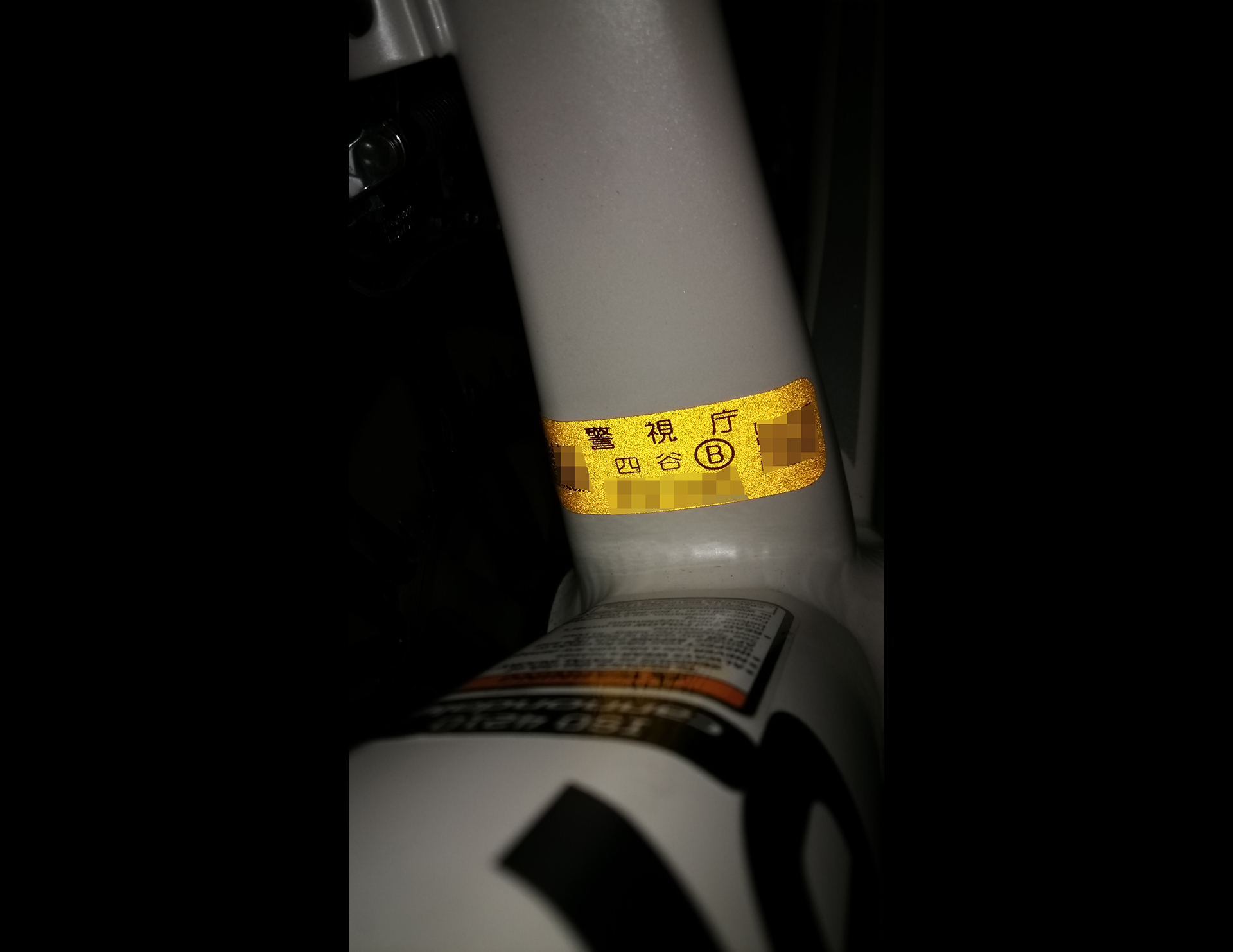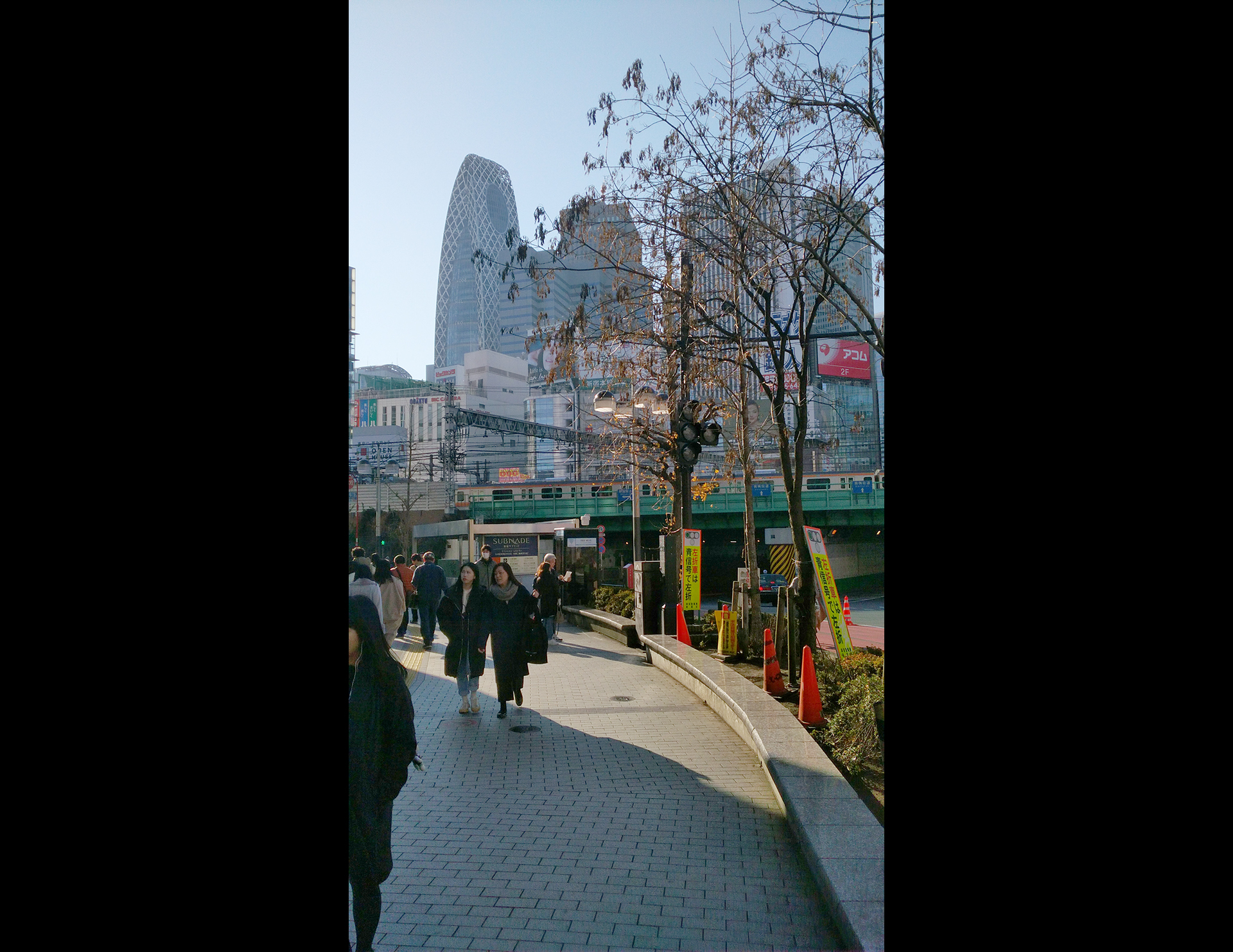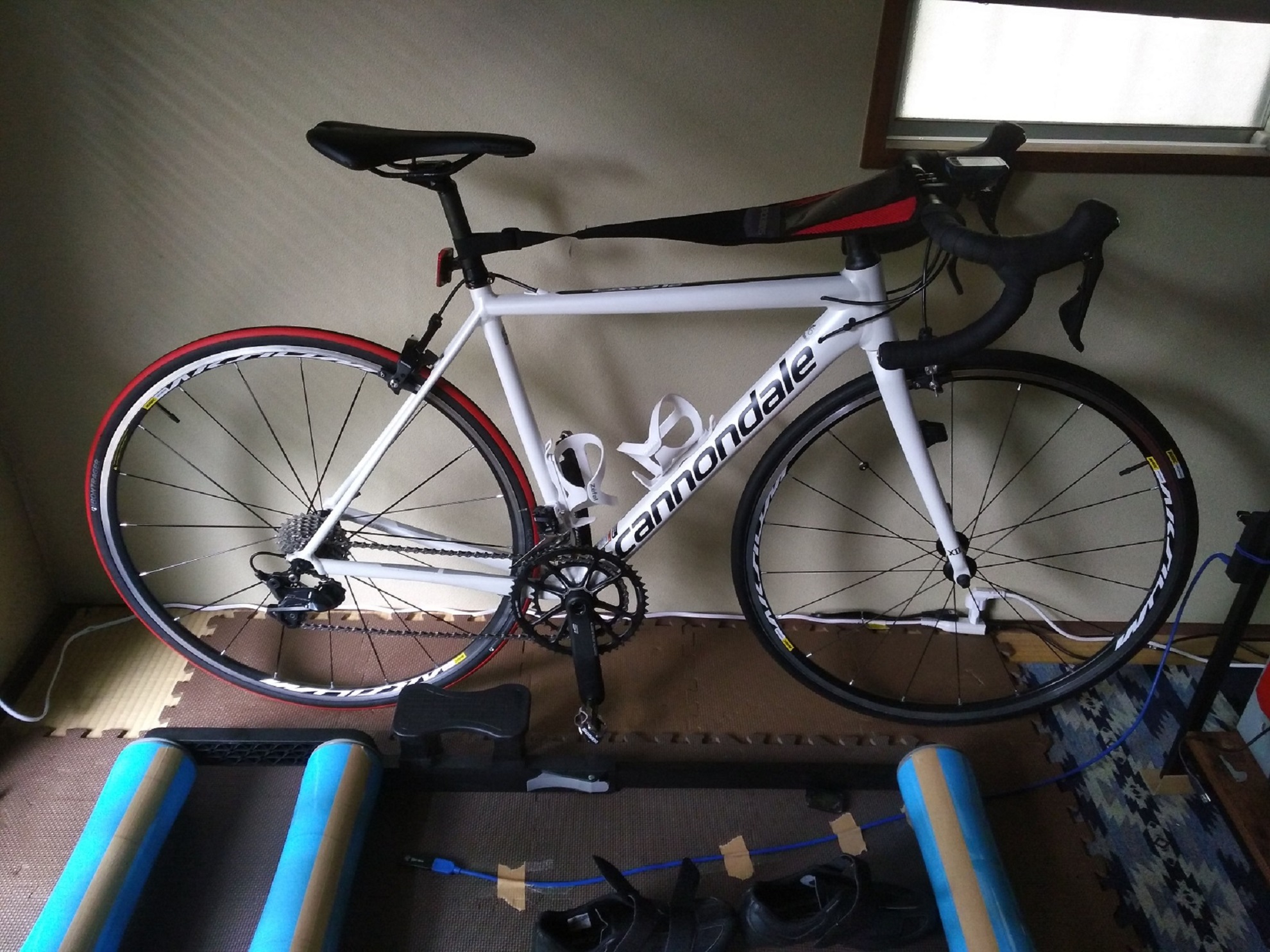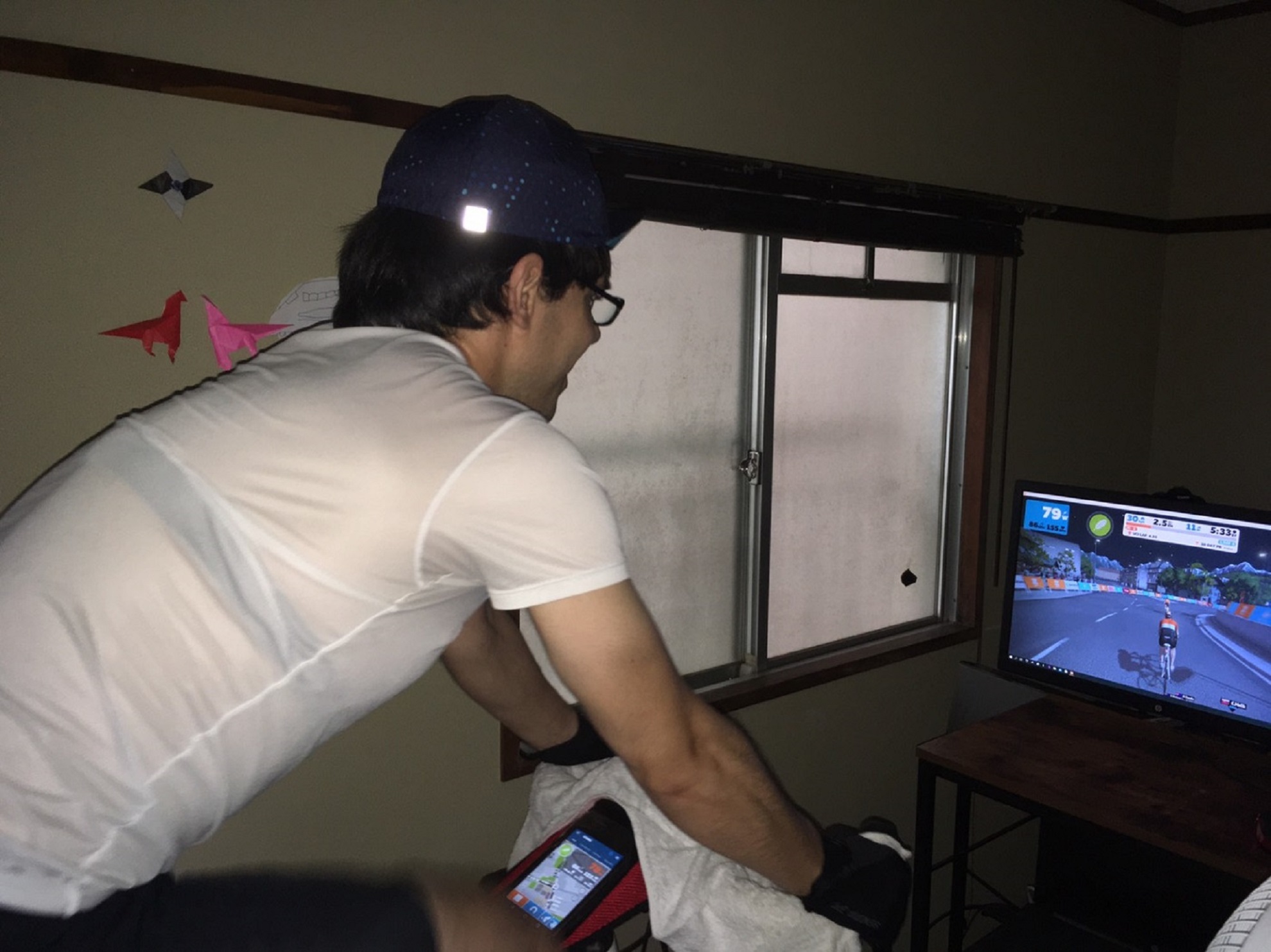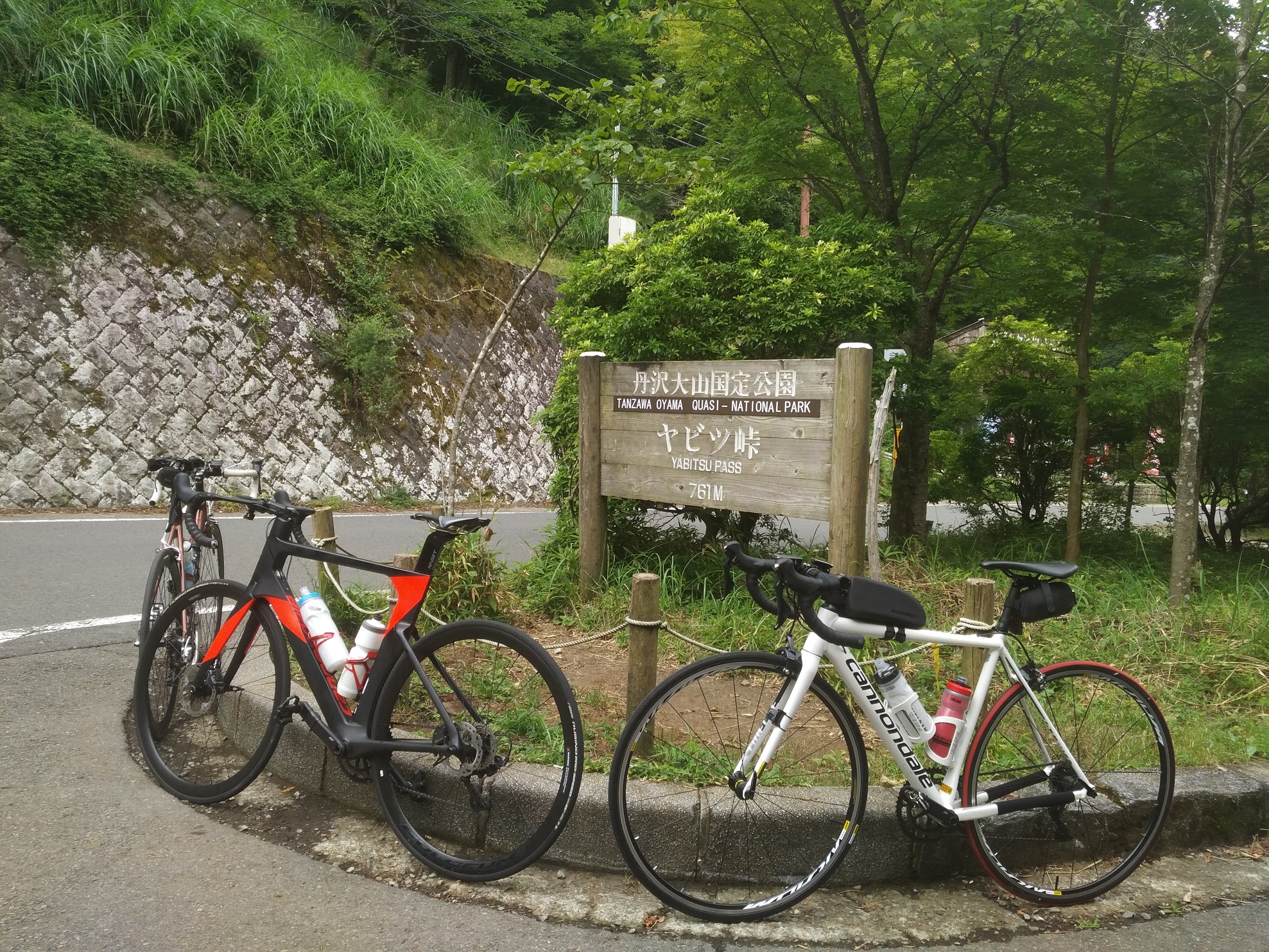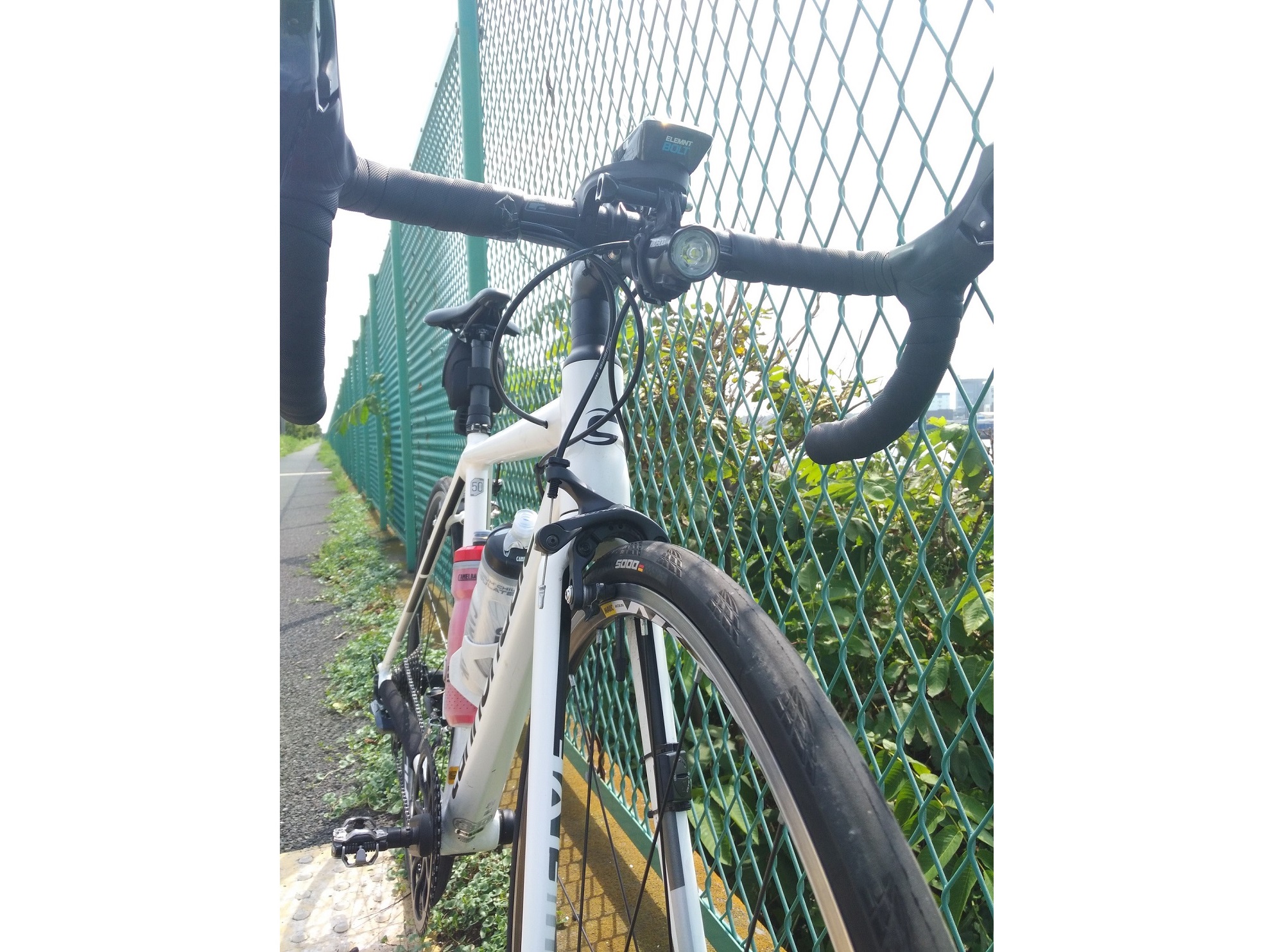September 9, 2020
Introduction: season 1
2020 has brought an increased interest in cycling, partially due to people's having more time to exercise during the lockdown provoked by the pandemic, partially due to people's deep interest - or even love - for cycling, something that is engrained in most us from a very young age, and that never actually leave's us. As the popular saying goes: "it's like riding a bike; you never forget it." For a kid, a bicycle means freedom and adventure. Freedom to roam around and go further than our own neighborhood or parents allows; and an adventure to discover, spend time with friends, taking on new trails, getting hurt, and falling and getting up again... I guess some of us only experiment such feelings again once we hit 18 years old and are legally allowed to drive a car.
The following text is about my recent experience on cycling, not on the freedom, adventure, and healthy feelings that it brings, but solely on the financial side of it. First of all, I want to say that I am an amateur, always have been, and everything points out that I always will be. I cycle because I like cycling, I find it cool and it's good for my health, but, since this is an article about the expenses I've had, I should say that it is not healthy for my wallet. Obviously, the money I've spent is too much for some people, too little, or just right for some. For me it felt right for some items, and not so right for others, but that is why I am laying out the money I've spent. I tend to keep track of my expenses so I can learn where the money goes to and later evaluate if my past decisions were good or bad, so I can learn. And I've bought so many crappy items, that, even though they were cheap, they ended up being a waste of money because, after using them for a while, I quickly came to realize that I really didn't need them to begin with. You know when you look at a bag and you think to yourself that it would help you to transport this and that, and in the end, you end up using the same bag as always. It has happened to us all.
Because I have made a list of the items that I bought, these will be presented accordingly to the purchase date and divided into months. Furthermore, the listed prices will show the original currency (either yen or euro), and the currency conversion on that date. In the end, there will be a total value for yen and euro. The reason for this is that most items, including the bike, were bought in yen, in Japan, while others were bought online and paid in euro.
How cool is this?
January
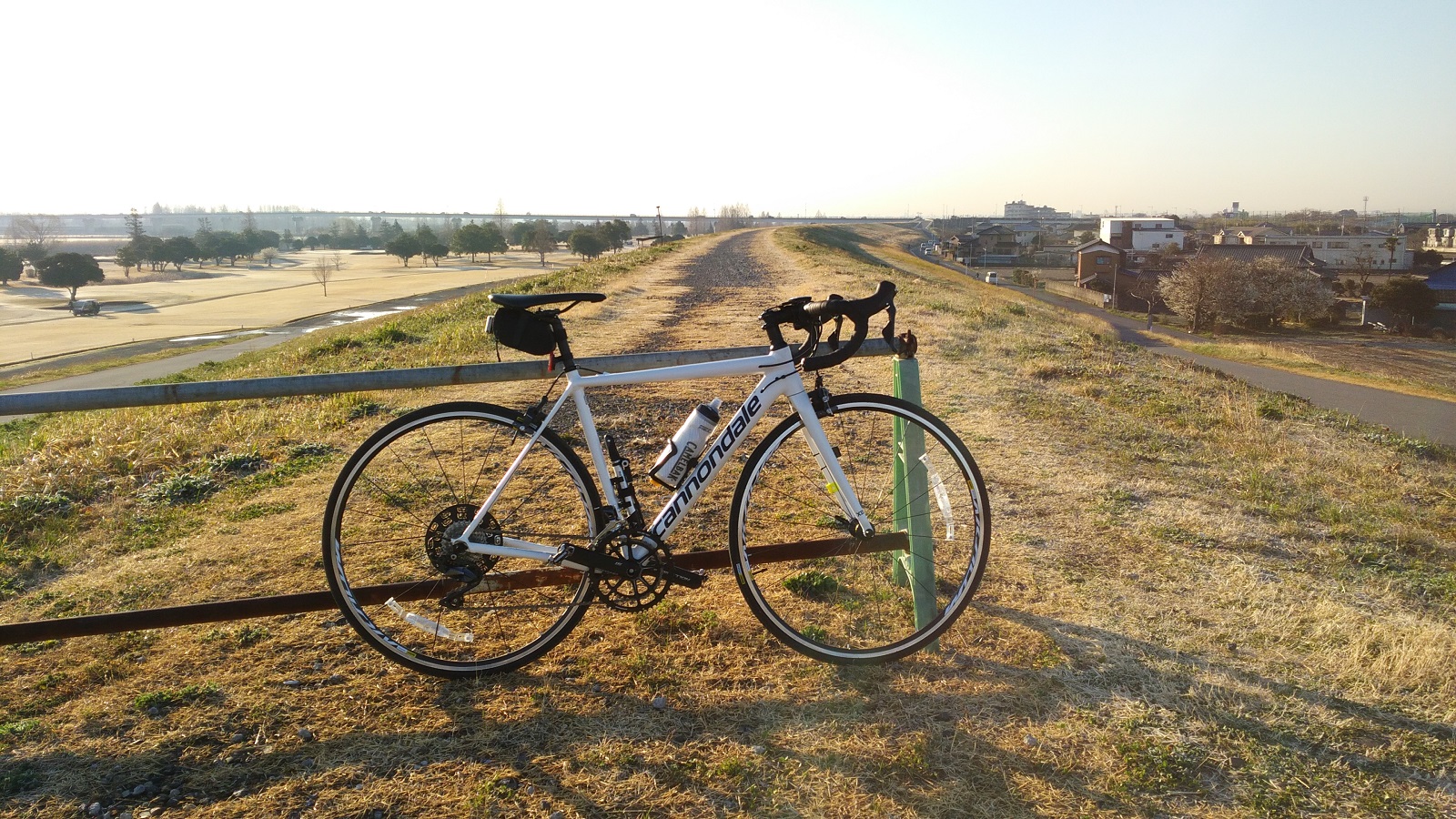 Discovering the Arakawa cycling road. (2019)
Discovering the Arakawa cycling road. (2019)
Before 2019 arrived, I was already toying in my mind with the idea of getting back to cycling. Seems quite easy and everyone has some bicycle laying around, even if it hasn't been used for some time. Well, after one year in a new country, the only bike I had acquired was a typical everyday bike used in Japan, called mamachari. An essential item for those living in Japan, or at least in Tokyo (because I have never lived outside of Tokyo when I mention Japan, I mean Tokyo). They are cheap (mine cost 11 thousand yen), low maintenance, and usually come with a basket for shopping. And although I rode it quite often for pleasure, and finally acquired those feelings of freedom and adventure, the truth is that it was just a mamachari. With only one gear and quite heavy, still, I rode it quite a lot and cared for it like I would with any bike. But I wanted to get back on physical exercise and to stop the pain on my knees from running; so, besides thinking going back to swimming, the other option was a bicycle, something I would exercise with but also travel and explore beyond what walking could provide. I did some research, checked prices (set up a limit), talked to people, and went on indecisive, until the day of the purchase, whether I would get a road bike or a gravel bike.
On January 19 of 2019, I went to Y's Road in Shinjuku, which was having a sale day (these are actually quite common). In Shinjuku they have three stores, a main store, a clothing-related store (where helmets are also sold), and a crosscycle-dedicated store. I have to confess that, for a few bike brands, such as Trek, I didn't really know much about them. After picking up the bike and being measured (first timer here), while things were getting ready, I went on to the clothing store, where I would buy shoes, gloves, and a helmet. Thus, although the bicycle was the first thing that I picked, it wasn't the first one that I paid for. And even though I knew the price of the bike (before taxes), payment would be done only on the following day, after-tax was included and other price cuts were included. After all, this was a sale day.
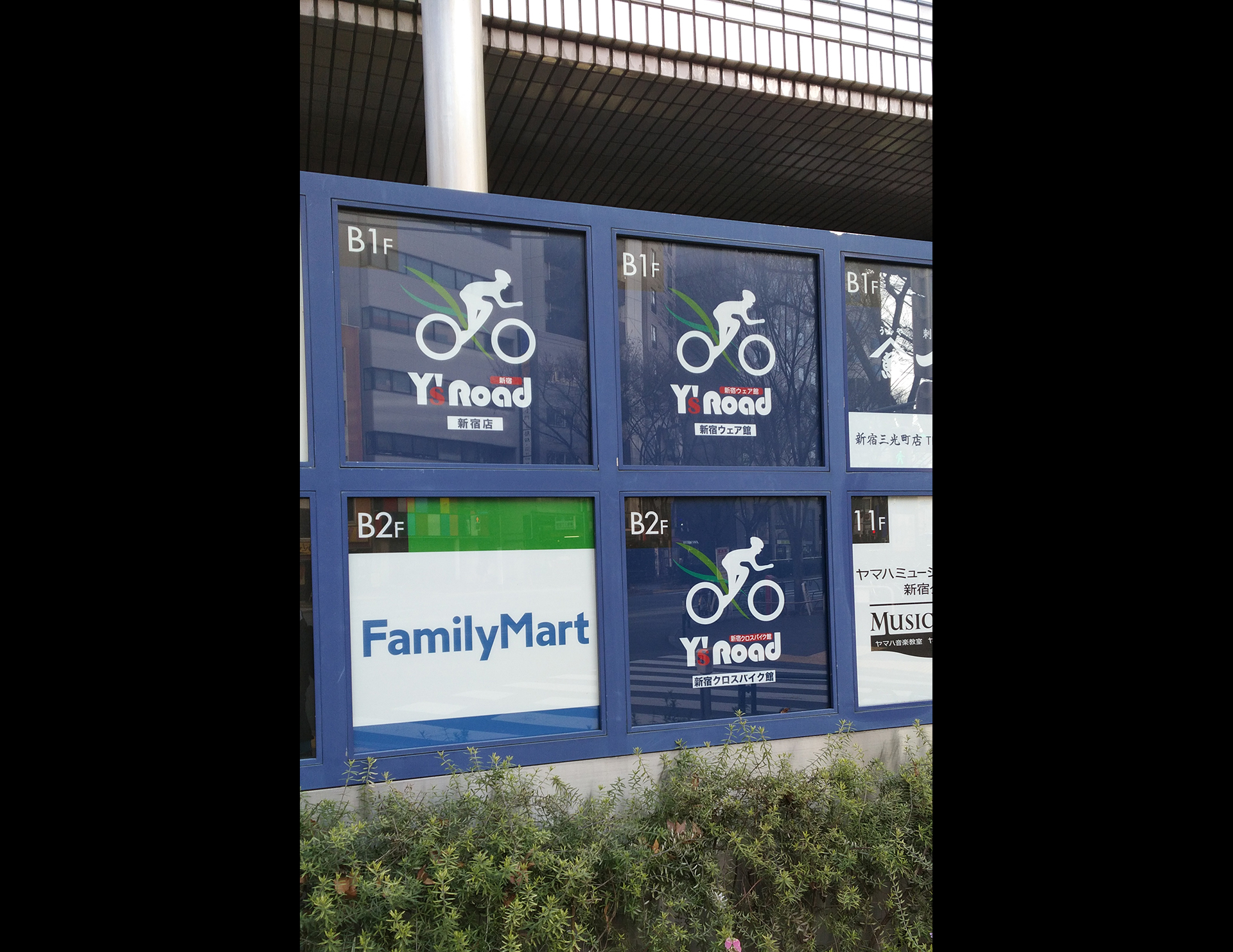 Y's Road in Shinjuku. (2019)
Y's Road in Shinjuku. (2019)
Shoes, gloves and helmet
As my first bike, I didn't feel like spending too much money, so I was picking up the cheapest products I could, just to get started. For shoes, I bought the Shimano RP-1, which has served me just fine. But again, I haven't ever used any other road bike shoes, so what do I know? I don't plan on upgrading anytime soon, although they are a little bit tore. For gloves, in the coldest month of the year, I bought the Shimano Classic, perfect for summer rides. I rarely use them these days, except for when riding at night in the summer, because I pretty much use full finger gloves, to protect from the sun; and because, after a while, I had to buy winter gloves to protect my fingers from freezing. Finally, for the helmet, I picked up the Kabuto Tranfi, a japanese brand that I didn't know, but which is quite popular in Japan. I believe the helmet was the second cheapest available and was certified by the Japan Cycling Federation (JCF).
"JCF certified helmets have 'JCF certified sticker'. The sticker indicates the helmet meets the JCF standard. When joining JCF certified races, the helmet with this sticker must be used."
Pedals, Cleat Adaptor, Bell
Back to the bike store, it was time to pick up essential items. I confess that this was the first time that I had bought a bike that didn't include pedals, so I was left in front of several types of pedals, not knowing which ones to pick. After checking for a while, I committed the "sin" of picking up mountain bike pedals, the Shimano PD-M520 SPD, for a road bike, and the necessary cleat adaptor (SM-SH41). I didn't know back then, but it seems that mountain bike pedals on a road bike are frowned upon. It didn't really bother me for quite some time, and they were quite handy, to be honest, since I could clip them on both sides. But my opinion would change after riding my bike for more than 8 hours, up the mountain, and I started feeling the need of having a bigger support base for my feet.
Because it is mandatory in Japan to have a bell - alongside with lights and reflectors -, I was forced to get one in the store. That bell was quite useful to alert the never ending old people that like to cross the road without looking, but recently I decided to remove it from my bicycle, because... it didn't look cool.
Bicycle, Cycling computer, Bike registration, Rinko bag, and Rear wheel support
Even though I had done my research before getting the bicycle, I ended up buying a bicycle which I hadn't consider, and that was the 2018's aluminum Cannondale CAAD12, with an Ultegra groupset. I couldn't pick up the color, because it was the only one left, and, although I would obviously avoid getting a white bike, it didn't matter. The price seemed right - it was listed at ¥196,560 (before 8% tax), or €1575.68, but I got it for ¥167,232 (with 8% tax) -, it was considered to be the best aluminum bike of the year 2018, according to Bike Radar website, and came with an Ultegra groupset, except for the crank, which was a Cannondale SI spider crank. The wheels included were Mavic Aksium with Mavic Yksion tires, which, as I was reminded on the day of my purchase, if I wanted really good wheels, I would have to be willing to spend more money than the bike itself. Well, I guess I'll do that sometime later. Can't stop thinking about you, DT Swiss.
As any kid that goes with his father to the nearest local bike shop (LBS) to get his first bike, or second for that matter, one cannot wait to pay and ride it back home. But in that shop I was told that I had to attend a 2-hour lecture about maintenance and on how to ride the bike. I was mind blown by this, and this is also the reason why I would only pay for the bike the following day, the day of lecture, after leaving a deposit. While I was attending the lecture on the following day, which I could hardly understand anything of what was being said, because... it was in Japanese, my bicycle was being set up, namely the pedals, (as well as the cleats on the shoes), the bell, and the cycling computer. At first I picked up the cheapest cycling computer in store, but was quickly enticed to get a more expensive one, namely the Cateye Velo Wireless+ VT235W. Had I known that later I would actually buy a much more expensive one - and also that I could actually get this one much cheaper online than on store -, I would have stuck to my first choice. And even though I would later purchase a more capable cycling computer, I still have the Cateye attached to the bicycle, which is functioning as the bicycle's faithful odometer.
Another mandatory "purchase" in Japan, is the registration of the bike, which can be done at any shop. It costs 500 yen and a sticker is attached to the bike with the registration's number. Even if one brings a bicycle from abroad, one must register it. It is quite common to see bicycles being pounded by the city, and I guess the owners are contacted after the bike's registration is confirmed. But even though the bicycles are pounded, I doubt that there is any fine for abandoning a bicycle, since one can see many mamachari's rusted and abandoned, either because they were stolen, or simply because the owner moved away from Tokyo and didn't care to bring the rusty bike. Well, obviously I wouldn't be mistreating my first road bike to the point of abandoning it, and when the moment came to stick it to my bicycle, I was also asked if they could add a store sticker. Sure, why not. At the moment I was loving that bike store, but nowadays... Well, I can buy and install a lot the components on my own much, much cheaper than what they charge me (2000 yen for a 10 minute job? Never again.)
Besides being mandatory to have a bell, lights (which I refused to buy saying that I had two at home), and reflectors, if one wants to take the ride on trains or metro (although I bet it is impossible on rush hour), one must put the bicycle in a bag, which in Japan are known as rinko bags. There were a lot of options and the salesman guiding me (different from the previous day) tried at all cost to convince me not to get one. But I was convinced that I would need one, so I picked up the Oyster (confirmed), along with a front wheel support, so the fork wouldn't touch the ground when I removed the wheel to carry it in the bag. Despite of my convictions, almost two years after getting my bike, I still haven't used the rinko bag, not even once to try it. But I will. Soon.
Other stuff
I quickly jumped on the Internet and started buying several small and cheap items, which I deemed essential back then, such as the cellphone holder for the handlebar, a saddlebag, some underwear foam shorts, a new pair of gloves, and nylon zippers - because I had decided that I wanted to change the placement of the cycling computer on the handlebar. In my mind, I was going to be riding long distances, therefore a saddle bag wouldn't be enough to carry all the necessary tools, such as a multi-chain tool (which I already had), so I bought the Rockbros top tube frame bag, as well as other necessary items, such as an iron lever (terrible idea), an SJCAM camera mount, and an SJCAM helmet mount, because it seemed a good idea to put a camera on top of my helmet and record my rides. Right... The level of excitement was, nevertheless, quite high, so I wasn't thinking straight, even though I had all the time in the world to make the decisions, since I bought most of these items online.
Clothing
Finally, with the bike in my possession, I started focusing on other purchases. If you have been reading this far, you will remember that I announced that I was (and still am) an amateur, and even though I bought road bike shoes and a pair of gloves, I didn't buy any clothes for a comfortable and protective ride. So again, I went online and ordered a balaclava and a headband, because it was very cold, and also because they were quite cheap. I wasn't aware of this, but my first rides brought me home with my feet hurting and the fingers completely white. It was quite painful to ride with cold feet, so I bought some nylon shoe covers to protect from the wind. Although not as serious as cold feet and hands, I needed proper clothing. I went back to the shop and bought a winter jersey and winter bibs, because, once again, it was very cold. I thought that I would worry about lighter clothes later since at the moment my goal was to ride early in the morning.
Expenses roundup
| # | Item | Price | Yen | Euro |
|---|---|---|---|---|
| 1 | Shimano SH-RP 100 Shoes | ¥8,208 | ¥8,208 | €65.99 |
| 2 | Shimano Classic Gloves | ¥2,586 | ¥2,586 | €20.79 |
| 3 | Kabuto Tranfi Helmet | ¥10,722 | ¥10,722 | €86.20 |
| 4 | Shimano PD-M520 SPD Pedals | ¥4,309 | ¥4,309 | €34.64 |
| 5 | Cleat Adapter SM-SH41 | ¥1,509 | ¥1,509 | €12.13 |
| 6 | Giza Slim Sports Bell | ¥718 | ¥718 | €5.77 |
| 7 | Cannondale CAAD12 Ultegra | ¥167,232 | ¥167,232 | €1344.31 |
| 8 | Cateye Velo Wireless+ VT235W | ¥5,643 | ¥5,643 | €45.36 |
| 9 | Bike Registration | ¥500 | ¥500 | €4.02 |
| 10 | Ostrich Rinko Bag | ¥5,899 | ¥5,899 | €47.42 |
| 11 | Front Wheel Support | ¥1,723 | ¥1,723 | €13.85 |
| 12 | Phone Handblebar Holder | €2.91 | ¥361 | €2.91 |
| 13 | Saddle Bag | €2.21 | ¥275 | €2.21 |
| 14 | Underwear Bib Shorts | €2.84 | ¥353 | €2.84 |
| 15 | Sendiya Sport Gloves | €2.15 | ¥267 | €2.15 |
| 16 | 100 Nylon Zippers | €1.38 | ¥171 | €1.38 |
| 17 | Rockbros Balaclava | €7.20 | ¥892 | €7.20 |
| 18 | Rockbros Headband | €3.53 | ¥437 | €3.53 |
| 19 | Shimano Winter Jersey | ¥7,900 | ¥7,900 | €63.65 |
| 20 | Shimano Winter Tights | ¥7,900 | ¥7,900 | €63.65 |
| 21 | Rockbros Frame bag | €10.10 | ¥1,263 | €10.10 |
| 22 | Nylon overshoes | €1.62 | ¥203 | €1.62 |
| 23 | Iron lever | €2.69 | ¥336 | €2.69 |
| 24 | Aluminum holder for SJCAM | €2.15 | ¥269 | €2.15 |
| 25 | Helmet mount for SJCAM | €1.16 | ¥145 | €1.16 |
| ¥229,820 | €1847.74 |
The bike's not enough
February
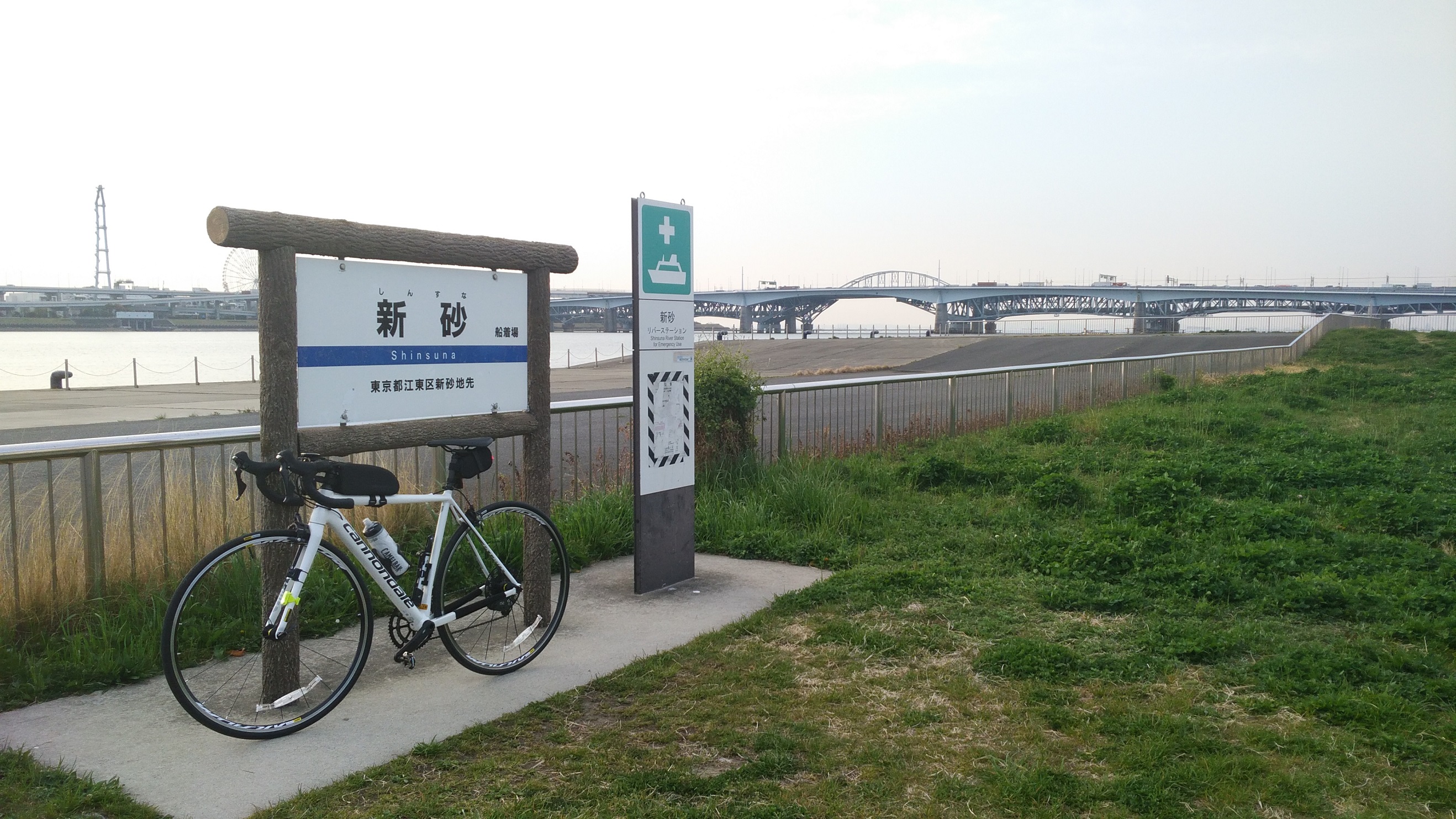 Cycling all the way to Tokyo Bay. (2019)
Cycling all the way to Tokyo Bay. (2019)
Clothing
February arrived and I had hardly been riding my new bike because it was cold. Going out early in the morning for a ride, no matter how sunny it was, didn't matter, because the wind coming towards me was too cold. I had now two pairs of gloves to pick from, but they were no match for the wind, so I went back online and ordered a new pair of gloves, and, again, I wanted to keep the expense as low as possible. Thus I bought the Coolchange Winter Gloves, with one shopper commenting that they were "warm as hell". That shopper wasn't lying and I ended up riding with two pairs: one for the very early morning and another that I would swap after one hour or so of riding because I couldn't stand the heat anymore. But although my hands would get extremely hot and I didn't really need them in mid-day, the same was not true for my feet, which were cold at any hour of the day. Since my first shoe covers didn't really work well, I decided to spend a little bit of money and bought the Velotoze overshoes and this, I confess, was a game-changer. Although these covers need more caring, in order not to tear them, they isolate the heat very well, to the point that every time I removed them, my shoes were completely covered in sweat. Obviously, if I was starting to buy into the cycling gear, I also needed to start buying proper socks, and ended up picking the Japanese brand Footmax, which were on sale that day, and had written on them "España". To be honest, because I've been riding with them ever since, I can't even tell if they make any difference.
Several stuff
One thinks that buying cheap is a win until we later realize that we didn't need any of those things, or that they were too cheap and broke after a while, and ended up buying the more expensive equivalent, i.e., the very first one that should have been bought (if it really is necessary). And just like the gloves, again, I bought a new cellphone holder. This was an impulse buy because, at the store, I noticed that there was a cellphone holder that could be put on the stem, instead of the bar. This would make the phone seamless with the stem. But it didn't, because my phone was bigger than 5".
Starting from February, I definitely wanted to ride longer, so I finally bought a water bottle, the Camelbak Podium Chill, a really cheap bottle cage, a bike stand, which I thought was for the rear wheel but ended up being for the front wheel (amateur), the Giant Control Tower 3 pump, and the portable Topeak Mini Morph pump, to carry with me on my rides. I ended up picking this pump because it has a lever where I can put my foot when pumping as if it was a floor pump, and it does, indeed, work great.
Expenses roundup
| # | Item | Price | Yen | Euro |
|---|---|---|---|---|
| 26 | Coolchange Gloves | €9.03 | ¥1,135 | €9.03 |
| 27 | Stem Cellphone Holder | ¥1,382 | ¥1,382 | €11.07 |
| 28 | Daiso Bottle Cage | ¥108 | ¥108 | €0.86 |
| 29 | Front Wheel Stand | ¥1,898 | ¥1,898 | €15.07 |
| 30 | Camelbak Podium Chill | ¥1,795 | ¥1,795 | €14.25 |
| 31 | Giant Control Tower 3 | ¥2,873 | ¥2,873 | €22.80 |
| 32 | Velotoze Overshoes | ¥2,970 | ¥2,970 | €23.57 |
| 33 | Footmax 3D Sox | ¥583 | ¥583 | €4.63 |
| 34 | Topeak Mini Morph | ¥4,104 | ¥4,104 | €32.57 |
| ¥16,848 | €134 |
How much does the heart beat?
March
March arrived and the promise of warmer and longer days was on the horizon. I started meeting with other cyclists and getting to know new routes, finding stuff about their bikes and accessories they used: cycling computers, power meters, heart rate monitors, clothing, etc. An array of cycling products that I wasn't even aware of. On my mind I thought that just getting the bike was enough. But then came the clothing, the accessories, and even when going out for long rides, these had extra expenses attached, such as buying extra water or stopping for meals. Up until then, my cycling route has been to ride along the Arawaka, something that I still do today. It can get quite boring, but it is a safe road to ride. Even though I was starting to be more conscious about the items I needed, I still ended up buying some crap.
Clothing
I bought another pair of socks that were still on sale. While it was getting warmer, the wind was still a little bit cold and it hurt when breathing, therefore I bought a neck warmer which I also used to protect my mouth. I also bought a cheap windbreaker from Aliexpress, despite being disappointed with it, because it wasn't properly stitched, I could still use it in the end. Finally, I picked some Rockbros Overshoes and Sunglasses, also very cheap. I used the sunglasses for a while but then gave up on them because I wasn't comfortable with them. However, I felt the need for the glasses, not because of the sun, but because of the bugs that kept hitting me when riding at night along the river. Since then I have always used them, although I am on the hunt for something better.
Several stuff
After having put on some km on my bike, in different weather conditions, it was time to clean it for the first time. My main concern was the chain, so eventually, I ended up buying cleaning products. Now that I look back, I didn't actually need the Parts cleaner and Bike Wash, but only the semi-wet lube for the chain and the cleaning brush. Everything else that was necessary I already had, such as wash liquid and old cloths. Today I hardly use the semi-wet lube, because I bought on a spray, and I don't necessarily use the bike wash and parts cleaner on every bike wash, so I guess these products will last years. The thing I regret the most buying were these little things that seemed to make sense, but that rapidly I realized that I had only bought them because they were cheap, namely, protective covers for the frame, a protective rubber ring for the seat post, and a 10 cm bar to put on the handlebar, to serve as an extension where I could put my phone and other stuff. What a stupid idea.
As time passed, I started noticing on my white bike, that, near the handlebar, the cables coming from the frame to the cockpit were leaving a black stain on the frame and after a wash, this was not coming out. Because of this, I bought some protective transparent stickers so the cables wouldn't directly rub the frame all the time. I also had to buy an extra strap to better hold the frame bag in place, and I got myself a new bottle Camelbak Podium.
Electronics
I don't remember now how it came to my head that I needed a Heart Rate (HR) sensor, maybe from reading articles or from watching people's heart rates on their Strava records, but suddenly I really wanted to have an HR sensor and get to know how much my heart was beating when riding. After doing some research on which one to get, I ended up picking the Polar H10. I hated paying for it (and, unfortunately, this is common for several purchases that I did for this sport), but I loved the fact that now I could see where I was pushing too much and too little. My cycling computer didn't let me connect with the heart sensor, but luckily, back then, Strava still allowed it, and this was enough for me. From here I started focusing on my effort zones and looking to finish every ride with more than 50% of it on zone 3, the cardio one. Ever since I got a cycling computer that can display in real-time these metrics, heart rate and cadence have become the main metrics that I focus on while riding.
Expenses roundup
| # | Item | Price | Yen | Euro |
|---|---|---|---|---|
| 35 | Footmax 3D Sox | ¥583 | ¥583 | €4.63 |
| 36 | Cleaning Brush | €3.32 | ¥418 | €3.32 |
| 37 | Frame Bag Strap | €0.67 | ¥84 | €0.67 |
| 38 | Face Cover | €1.68 | ¥211 | €1.68 |
| 39 | Rockbros Overshoes | €12.01 | ¥1,511 | €12.01 |
| 40 | Frame Protective Covers | €0.44 | ¥55 | €0.44 |
| 41 | Seatpost Protective Rubber | €0.53 | ¥67 | €0.53 |
| 42 | Rockbros Polarized Sunglasses | €10.97 | ¥1,380 | €10.97 |
| 43 | Wolfbike Windbreaker | €14.23 | ¥1,790 | €14.23 |
| 44 | Kure Chain Lube Semi-wet | ¥1,300 | ¥1,300 | €10.33 |
| 45 | Kure Parts Cleaner | ¥1,700 | ¥1,700 | €13.51 |
| 46 | Kure Perfect Bike Wash | ¥1,480 | ¥1,480 | €11.76 |
| 47 | Polar H10 HR Sensor | ¥12,204 | ¥12,204 | €96.58 |
| 48 | Camelbak Podium | ¥1,300 | ¥1,300 | €10.46 |
| 49 | 10cm Extension Bar | €2.55 | ¥317 | €2.55 |
| 50 | Paint Protection Transparent Stickers | €0.77 | ¥96 | €0.77 |
| ¥24,497 | €194.45 |
What's really my speed?
April
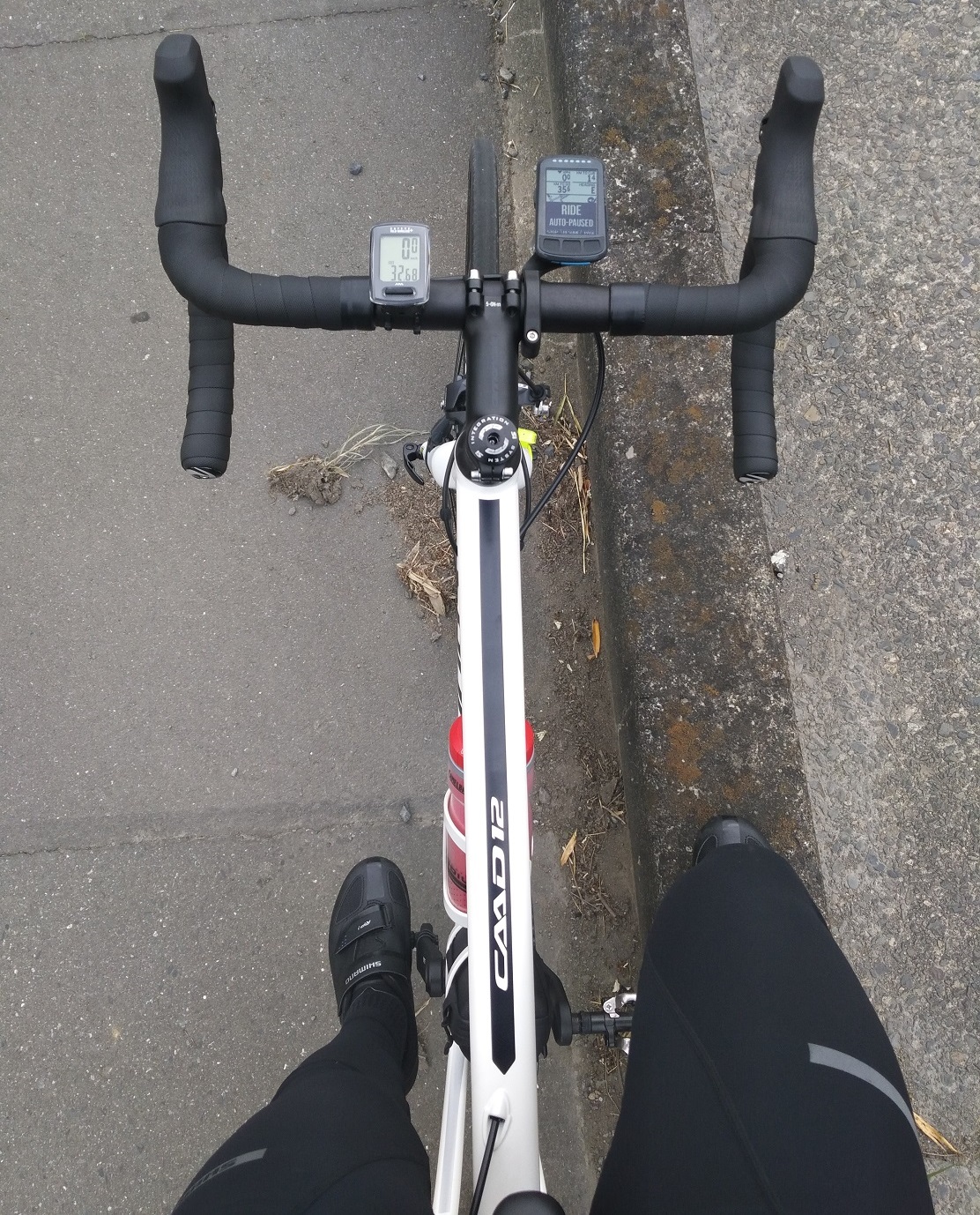 Couldn't fit the stock Wahoo mount on the left side. (2019)
Couldn't fit the stock Wahoo mount on the left side. (2019)
Electronics
No, I didn't jump into a more expensive cycling computer because I needed to have all the numbers all the time. Even today I pretty much just look at cadence and heart rate. But I would be lying if I told you that I don't want everything that it brings, such as the ability to see my route. No, the reason why I decided to buy another cycling computer because that my Cateye gave me a reading of 80 km per hour going down a mountain, one time. Back then I thought it was a mistake, but today, although I haven't reached such speeds ever since - and I wonder if I actually did back then -, I now know that it is actually feasible. But that doubt opened the door for an upgrade, and after considering the Lezyne Mega Colour GPS, I ended up picking up the . I wish I could say that I am 100% content with it, but it really bugs me that the auto-stop and auto-run options take some seconds to recognize that I have stopped or started. Numbers, on cruise, are pretty much the same as the Cateye that I still use today, but the Cateye is much more reliable when I stop and in less than a second it also stops reading, whereas the Bolt has its days: sometimes is fast, others, after stopping for a red light and waiting, it decides to auto-stop when it hits the green and I start riding again. This is really disappointing. Because of this, I decided to acquire two more pieces of electronics for my bike: a speed and cadence sensor. This time, after not even considering their expensive cycling computers, I decided to get the Garmin sensors. The pairing with the computer was quite easy, but the problem persisted and I wondered if it was actually connected, but going through tunnels has kept the readings true, so I guess it is. In the end, I think this is the way the computer is since I've noticed that other people's Wahoo's also taking some time to auto-stop.
Several stuff
I upgraded from a shitty bottle cage to a less shitier, but still shitty, Zéfal bottle cage. Again, they were on sale and I got myself two when I should just straight away bought something good. Another purchase was a tool case to carry on the bottle cage because I was starting to dislike having the saddle case.
Expenses roundup
| # | Item | Price | Yen | Euro |
|---|---|---|---|---|
| 51 | Wahoo Element Bolt | €264.55 | ¥33,346 | €264.55 |
| 52 | Zéfal Bottle Cage (2X) | ¥700 | ¥700 | €5.55 |
| 53 | Noguchi Tool Case | ¥3,024 | ¥3,024 | €24.28 |
| 54 | Garmin Speed and Cadence Sensors | ¥7,499 | ¥7,499 | €60.25 |
| ¥44,569 | €354.63 |
Lights! I need proper lights.
May
Electronics
My decathlon lights weren't cutting it. They didn't actually illuminate, and hardly worked to make myself visible to others. But they were lights nonetheless. After a long ride that got me home late, crossing Tokyo from the Tamagawa side to the Arakawa in the night, made me realize how unsafe I was riding on the street with other cars, and even more unsafe when riding on back alleys poorly lit. So that was it, I needed proper lighting. So there again I spent some of my time doing some research, trying to find a proper light that wasn't too expensive, and ended up with the Cateye Volt 800 lumens (which I didn't know what these were until then). This light is really powerful. It has 5 modes included: 3 modes with different degrees of lumens (from 800 to 400), and two modes flashing, one with constant lighting at 400, and another with no constant lighting, but rapidly flashing at 800. Usually, on roads, I use this last one, since the lights from the streets are enough for me to see where I'm going, and I am more concerned about having the cars see me. As for the powerful 800 lumens I rarely use it. Sometimes if riding on a really dark street that seems too rough, I use the most powerful setting so I can really see the road, and avoid bumps, for example. However, when using the 800 lumens, the battery will last one hour or so and the device really gets hot, so I don't really use it that much unless I really need it. The light comes with a mount for the handlebar but I already had too many things on my handlebar: a front reflector, the bell, and two cycling computers; so I wanted to light up my cockpit (no pun intended). Besides having the mount for my Wahoo on the wrong side, because I couldn't mount it on the proper side due to cable interference, I bought a new mount for the Wahoo which would allow me to attach right beneath it the light or even a sports cam. And, once again, I jumped into Aliexpress and got myself the Silverock Bike Handlebar for Wahoo.
Expenses roundup
| # | Item | Price | Yen | Euro |
|---|---|---|---|---|
| 55 | Cateye Volt 800 HL-EL 471RC | ¥9,800 | ¥9,800 | €79.77 |
| 56 | Silverock Bike Handlebar for Wahoo | €21.56 | ¥2,64100 | €21.56 |
| ¥12,441 | €101.33 |
These clothes are too hot!
June
Several stuff
June had arrived, and after having only put 319 km in May (compared to the 689 km from April), I wanted to make the most of this month. In my chat rooms there were plans of doing route x and route y, and being all day-riding, and I was getting quite excited about it. If I was going to be all day out riding far from home, I'd rather be prepared. After my light went dead one night, I knew I should carry with me an extra battery, and I picked up one Cateye Cartridge Battery, just to be safe. I was also riding with no spare tubes, so I went to the LBS and acquired two Vredestein Race inner tubes, this brand, just because they were cheap. June was also a month of rain, so everytime I rode my bike outdoors, I had to clean it more often. Not really happy with the products that I had purchased back in March, I got a kit online with wet-chain lube, a chain cleaner, and other accessories to help cleaning the bike. Add to that, I bought a PWT Chain Keeper Tool CKT22 to keep the chain in place when I remove the rear wheel. I would say it is a necessary tool, so you can clean the chain properly when using the chain cleaner.
Clothing
No matter if it was raining (light rain) or sunny, the days were getting pretty hot, and worst of all, pretty humid. Just being outside meant that you were sweating, but this fared no problem. Having no proper clothes for this weather, however, was a huge problem, so I went crazy on buying new clothes. At the LBS I bought a summer Shimano jersey and short bibs, made out of a lighter material than my full legs winter bibs. Went online and, of course, those same clothes I bought were much cheaper, so I ended up picking another jersey (this time white and even lighter) and another bibs, all Shimano brand. The problem with buying summer gear is that, although they keep you light, they don't protect you from the sun, and after getting a sunburn, I really decided that wouldn't work. I had to protect the biggest organ on my body. I already had some UPF 50+ shirts that I would use under the jersey, thus, whatever benefits those materials gave, it really didn't matter because the fabric wasn't sitting directly on my skin. Ever since I realized that I wouldn't jump onto more expensive jerseys, such as those from Le Col, or Lion de KAPELMUUR, but instead to even those cheaper than Shimano. Has for the bibs, that's a different story. To cover my legs I got myself 2 pairs of Shimano Sun Protection Leg Cover. To protect my face I, initially got a Shimano Sun Protection Neck, but then found a really cool and efficient face cover by Pearl Izumi. This Face cover has an entrance around the nose which can be lifted so I can drink or breathe. Besides, because of it, it does not let my glasses foggy. This has become an essential piece of every ride. Not only it protects without much effort from the sun, but also from dust and any bugs flying around. Another item I got from Pearl Izumi was also a UPF protection full finger gloves, which I use every time I ride under the sun. Unfortunately, because of the sweat, these gloves quickly become stinky after a ride, so it is necessary to wash them quite often. On the other hand, having a full finger, sun protection gloves is very important, not only to protect your skin but also your gear from sweat or any slippery that might occur because of it. My final items were a Pearl Izumi cycling cap, just because, and a red Shimano windbreaker that looks really cool. I'm not sure about the efficiency of it because everything I wear is already quite tight to my body.
Indoors
As the month was drawing closer to an end, I was growing frustrated with not being able to ride more due to the constant rain. On my Strava I could see how everyone kept riding on their smart trainers, but the price of a smart trainer just seemed too much to me. Why are they so expensive? So I dug and dug and thought that I could live with rollers. I wasn't wrong... for about a month. Now they just collect dust. Anyway, precisely because of this I decided to buy the cheapest one on Amazon Japan and was actually quite impressed with them. First, it was actually quite easy to ride them. After watching several videos on YouTube of people crashing and other teachings on how to use them, I actually got the knack of it pretty fast. Obviously, I put them next to a wall and use the wall for support when starting. Besides that, no problem. Except for the heat which I wasn't aware of. When riding outside, no matter how hot it is, the truth is that the wind helps to dissipate some of that heat, but indoors there is no wind. So a fan is a necessity when riding indoors. This was not an issue since I already had one, but riding to a wall and sweating all over the tatami, those were big problems.
Expenses roundup
| # | Item | Price | Yen | Euro |
|---|---|---|---|---|
| 57 | Shimano Team Jersey Navy | ¥6,912 | ¥6,912 | €57.13 |
| 58 | Shimano Aspire Bib Shorts | ¥6,480 | ¥6,480 | €53.56 |
| 59 | Vredestein Race inner tube (2X) | ¥1,296 | ¥1,296 | €10.71 |
| 60 | Shimano Climbers Jersey White | ¥5,800 | ¥5,800 | €47.64 |
| 61 | Shimano Sun Protection Neck | ¥1,884 | ¥1,884 | €15.47 |
| 62 | Shimano Sun Protection Leg Cover | ¥2,293 | ¥2,293 | €18.83 |
| 63 | Chain cleaner | ¥1,491 | ¥1,491 | €12.28 |
| 64 | Pearl Izumi UV Full Finger Gloves | ¥4,309 | ¥4,309 | €35.45 |
| 65 | Shimano Compact Windbreaker Red | ¥4,309 | ¥4,309 | €35.45 |
| 66 | Shimano Shorts Bib | ¥3,800 | ¥3,800 | €31.27 |
| 67 | Pearl Izumi FA3 UV Face Cover | ¥4,104 | ¥4,104 | €33.83 |
| 68 | Shimano Sun Block Leg Cover | ¥4,895 | ¥4,895 | €40.35 |
| 69 | Cateye Cartridge Battery | ¥3,122 | ¥3,122 | €25.53 |
| 70 | PWT Chain Keeper Tool CKT22 | ¥1,510 | ¥1,510 | €12.40 |
| 71 | Pearl Izumi Cap | ¥2,440 | ¥2,440 | €20.04 |
| 72 | Deuter Rollers | ¥9,990 | ¥9,990 | €81.41 |
| ¥63,987 | €531.37 |
Now I'll ride everyday! So I thought.
July
Indoors
Riding the rollers indoors was fun for a few minutes. I was quite motivated by how much it demanded my attention so I wouldn't crash. On YouTube, I could find several types of exercises to do with the rollers, but that obviously wasn't enough. I could quickly reach high speeds and lose motivation because there was no tension. Riding 60 km/h indoors was no problem, except for the noise and heat. I started looking around and wanted to get on the biggest trend, which was Zwift. Although I didn't have a smart trainer, nor a power meter, I had a heart rate sensor, speed and cadence sensors, enough to be able to connect. But I didn't have an ANT+ connection on my computer, and, there again, I went shopping for an ANT+ Sensor USB Stick.
My trick to riding on Zwift was to always select the routes with the least altitude, so my numbers on my cycling computer and from Zwift would be somewhat close. Obviously that the only thing that matched was the heart sensor. My real speed was always somewhere between 40km/h and 50km/h, whereas on Zwift it would give me some 20km/h or 30km/h, depending on the route. Despite this, the 30-days free trial was quite fun, and I even entered some online competitions. After every ride, I had to meticulously clean my bike because of the sweat and ended up picking a sweatband to prevent the sweat from falling on my frame. It helped, but I still cleaned the bike with a wet rag after every ride, just to be sure. Another thing that I also decided to pick up was an extra tire, Bontrager R2 Hard-case lite, to use on the roller except for the ones that I used outside. This decision was taken, however, when the damage was already made. While riding indoors I had my rear wheel too close to a wall and, during one ride, it started to smell of burnt rubber. Even after the ride I didn't realize what had happened and thought that the rollers had some effect on my tires. I would only later realize that I had slightly burnt my rear tire and that soon I wouldn't be able to ride with it anymore.
Several stuff
Having my bike properly cleaned had started to become an obsession. My groupset which a few months back looked so shiny now was black. I asked a cycling mate if he could borrow me his cassette removal tools, so I could remove the "dork plate" out, and properly cleaned the cassette with a degreaser. I also wanted to be able to use the chain cleaner without having to turn the bike around, sitting it on the floor, but above all, I wanted to stop hitting my head on my veranda. Solution? A bike maintenance stand. Ever since I haven't hit my head and cleaning my bike has become much easier. In the beginning, I didn't put the bike properly by the seat post, instead, I used the frame until I read the bike manual that said that this was really not a good idea. I bet the frame is still okay, after all, I tend to sit on it sometimes, but I wish I had known this before.
Finally, the worst part of this month was when my front derailleur simply snapped, while riding. I don't know when or how it snapped, all I know is that I couldn't shift front gears. After 6 months of riding the bike, an Ultegra R8000 front derailleur broke. I was quite disappointed. After inspecting what went wrong, I had no choice but to replace it. Went back to the LBS, paid 1000 yen more than on Amazon (but service was not charged - the only time) and got back on riding. That I really wasn't expecting at all.
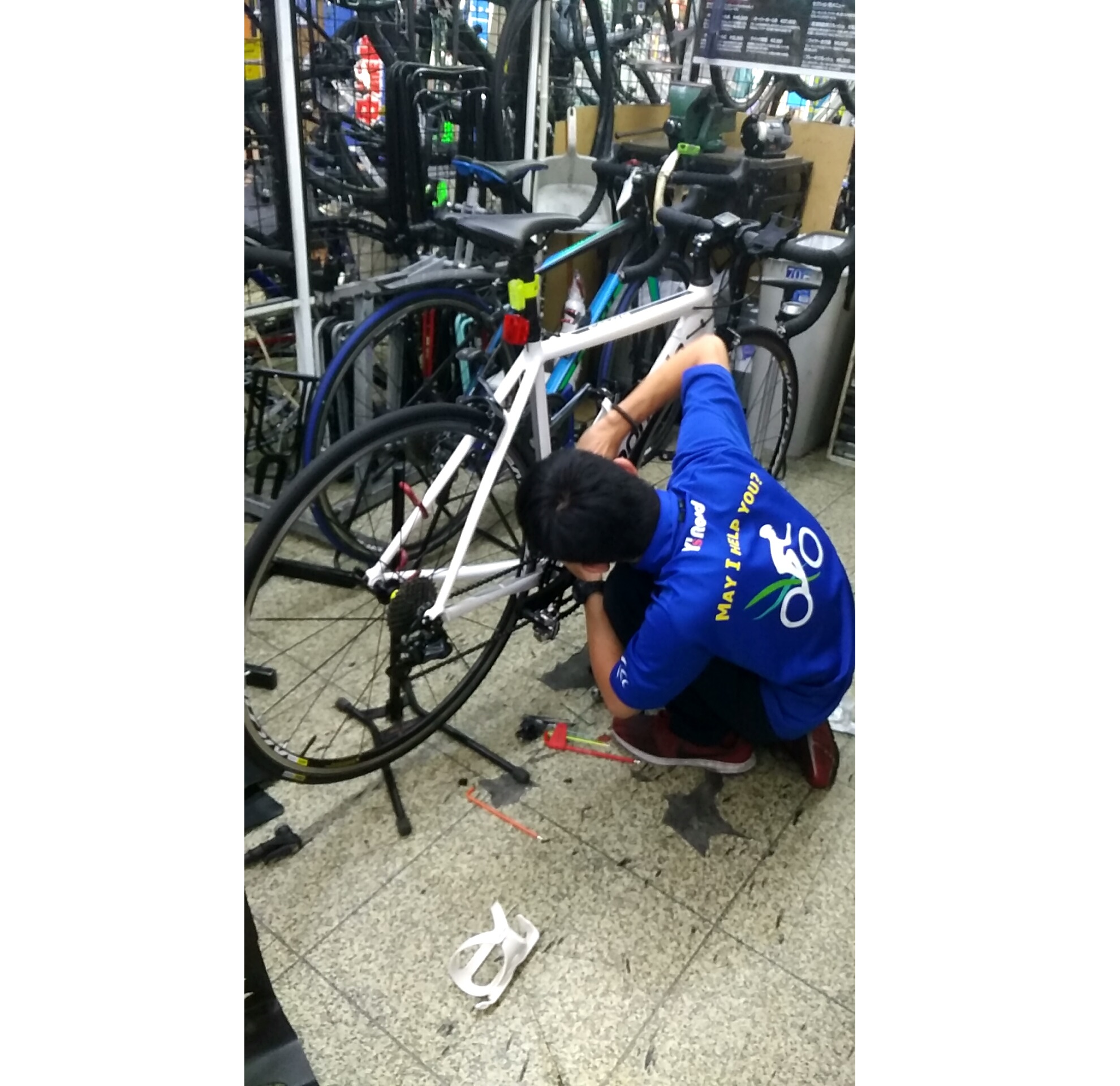 Installing new front derailleur. (2019)
Installing new front derailleur. (2019)
Expenses roundup
| # | Item | Price | Yen | Euro |
|---|---|---|---|---|
| 73 | Rockbros Sweatproof Cover | ¥1,299 | ¥1,299 | €10.66 |
| 74 | Ultrasport Bicycle Maintenance Stand | ¥5,339 | ¥5,339 | €43.72 |
| 75 | Allez ANT+ Sensor USB Stick | ¥2,400 | ¥2,400 | €19.74 |
| 76 | Bontrager R2 Hard-case Lite | ¥2,350 | ¥2,350 | €19.43 |
| 77 | Shimano Ultegra FD-R8000-F | ¥5,559 | ¥5,559 | €45.89 |
| ¥16,947 | €139.44 |
New tires already!?
August
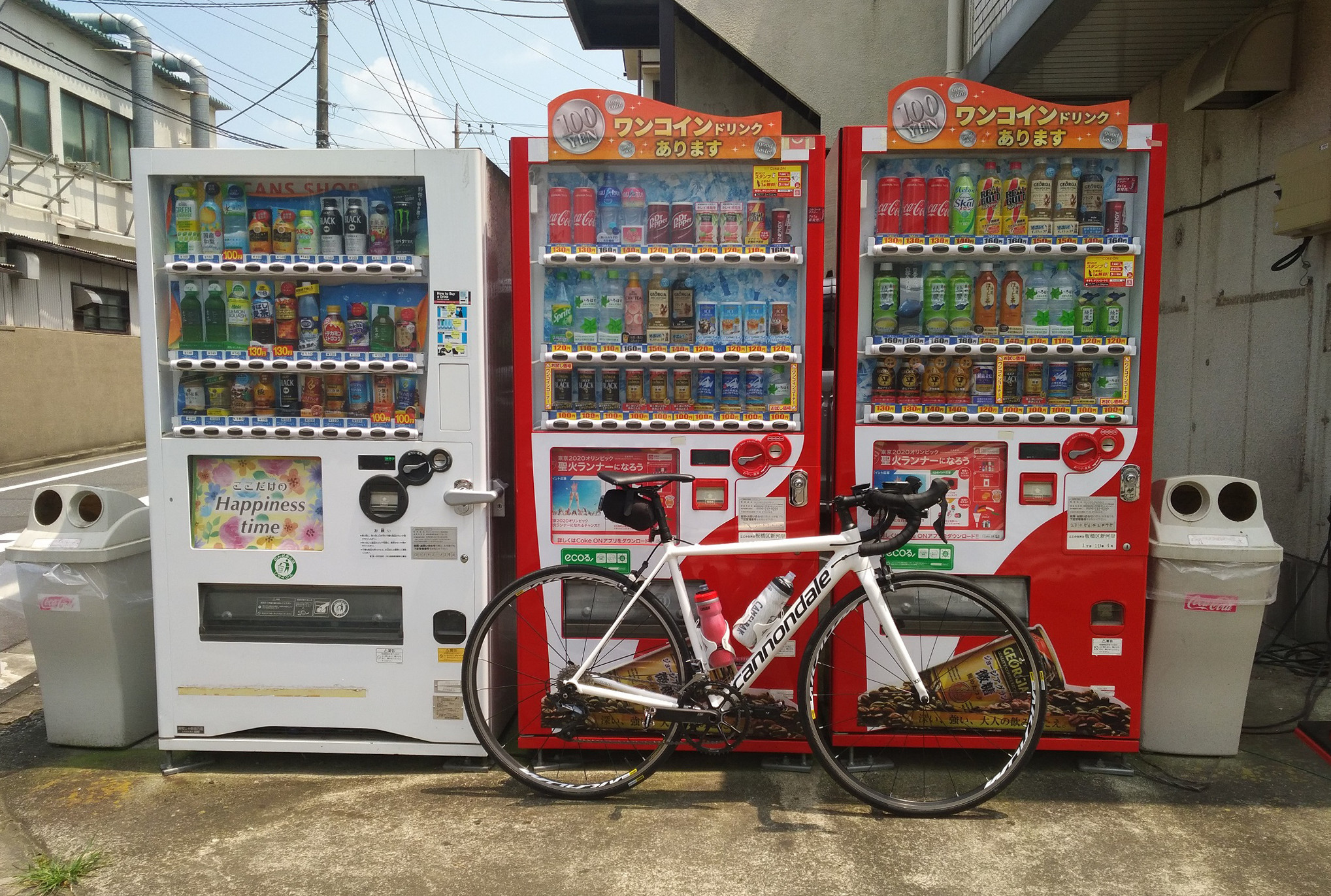 The need for more drinks in August. (2019)
The need for more drinks in August. (2019)
Several stuff
Yeah, I killed the rear tire. One night before a long ride I inspected the tire and noticed something strange: the tire seemed to have a zig-zag shape. But it was already late and I had to sleep. The next morning I got out of the house with my Bontrager tire on one of my rear pockets and rode on to meet with other cyclist fellows. On the way to the Yabitsu Pass, I couldn't ignore the bumpiness of my rear wheel and decided to change it for the ride. Looking at the tire again on daylight I could clearly see how deformed it had become. I changed the tire at a konbini stop, used the pump for the first time (it's really handy that lever), and went on to Yabitsu Pass for the first time. Everything went alright, and that Yabitsu pass was quite something. Back home I knew that I should replace both tires for safety. The decision on which ones to get was immediate since everyone was talking about them: the Continental Grand Prix 5000. Quite expensive, but also quite a difference from my stock tires. Although I wouldn't later replace again to the GP5000, because I'm not racing anyway, those tires did feel fast and I never felt unsafe on wet conditions either. But at that price point, I think it's only worth it if you are racing. During their life time with me, the front tire developed a hole, but I never had a puncture on it; whereas on the back tire I ended up having two punctures. But still, they lasted almost 4000 km, more than recommended.
Clothing
At the LBS I found, yet again, the same brand of socks on sale, so I jumped on it and bought two pairs.
Other stuff
My back pockets were feeling quite disorganized and I was already thinking about ditching the saddle bag for a lighter bike. After checking around what my options were, I bought a Sticky Pouch, size large. I really enjoy this pouch: it's large, slim, and made of neoprene, although not waterproof.
Expenses roundup
| # | Item | Price | Yen | Euro |
|---|---|---|---|---|
| 78 | Continental Grand Prix 500 (2X) | ¥10,900 | ¥10,900 | €92.44 |
| 79 | Sticky Pod Storage Pouch Large | ¥2,668 | ¥2,668 | €22.66 |
| 80 | Footmax 3D Sox (2X) | ¥1,080 | ¥1,080 | €9.20 |
| ¥14,648 | €124.29 |
It started getting really cold...
Rest of the year
Luckily I didn't need to buy anything more during the rest of the year, but I also didn't ride much. As it was getting colder it was becoming more difficult to ride outdoors and the attraction of riding on rollers quickly faded away, mostly because it took some time to set things up and because there was no resistance on rollers. Nevertheless, I still did some km, using the free 25 km that Zwift provides for non-payers, but I really wish I could seriously jump on it, and the desire to get myself a smart trainer has been growing ever since. In September I still managed to ride 341 km, but then my time on the bike dropped considerably: 31 km in October, 53 km in November, and going up a little bit to 182 km in December. In total, in my first year of riding, I rode 3819.83 km, not reaching my goal of hitting 5000 km.
Looking back at the costs per month and km put on the bike, the first month (January) was the most expensive one, but also the second one which I least biked. Reasons for not cycling so much in the very first month that I bought the bike were related to being busy with work and the weather conditions. Although not raining, it was pretty cold early in the morning and at night. April and June were other months where I spent more money, namely on the Wahoo Element Bolt cycling computer and on clothing. Has I was putting on more km on the bike, I was starting to feel the heat and humidity of this country and concerned about my safety riding in such conditions. Initially, I was very keen on just getting lighter, but after getting severely sunburned, my focus shifted to protecting my skin so I started buying all the sun protection items.
Expenses roundup per month
| Month | Total in Yen | Total in Euro | Total Km |
|---|---|---|---|
| January | ¥229.820 | €1847.74 | 43.47 Km |
| February | ¥16,848 | €133.85 | 161.50 Km |
| March | ¥24,497 | €194.45 | 550.78 Km |
| April | ¥44,569 | €354.63 | 689.66 Km |
| May | ¥12,441 | €101.33 | 319.96 Km |
| June | ¥63,987 | €531.37 | 426.74 Km |
| July | ¥16,947 | €139.44 | 494.71 Km |
| August | ¥14,648 | €124.29 | 523.52 Km |
| September | ¥ - | € - | 341.40 Km |
| October | ¥ - | € - | 31.59 Km |
| November | ¥ - | € - | 53.92 Km |
| December | ¥ - | € - | 182.57 Km |
| ¥423,756 | €3427.11 | 3819.83 Km |
I wish the table above would be more precise and that it also included how much money I spent on specific rides. Longer rides, for example, will have me stop more times to refill my bottle of water and grab a snack, or even, sometimes, stop for lunch. Another thing that I also started to notice was how hard it was for me to recover. Even though my diet already included eggs, chicken breasts, and other foods good for recovery, I felt that I wasn't recovering fast enough between rides, so I started buying powder protein to drink after every ride. I also began using electrolytes on my water bottles and carrying protein chocolate bars and amino-acid drinkable gels. These are all costs that, with time, add up, and which I wouldn't have if I weren't riding my bicycle. With this in mind, in order to have a better perspective of the expenses associated, they too should be included.
 Eating a protein chocolate bar. (2019)
Eating a protein chocolate bar. (2019)
I actually bought more stuff
I actually got more stuff, and it started with another bike. I didn't go crazy though, I simply bought a really cheap bike which I now use for more than 5 km commutes. I am, however, not including it on this list, because I bought it for different reasons. Nevertheless, because of it, I did buy another pump, speed and cadence sensor - because I was planning to also use it indoors -, and other stuff, including a new chain. Yes. That's how cheap it was. The stock chain broke on my second ride with it and left me having to walk with the bike for 3 km. Luckily, the new chain has been doing just well. In essence, this bike sits on a very low level, even lower than my mamachari, so it's uncalled for. But... I still care for her.
Conclusion
How dumb was I with money?
After having listed all the stuff I bought for this sport, how stupidly did I spend money? I'm going to list those things which I don't consider necessary and don't think I'll ever use them again, which makes their purchase stupid. I could argue for every item, such as the front derailleur. Why would I buy again the same front derailleur when the stock one broke after 6 months? What about the bike? Was that price worth it for an aluminum bike? How much can one expect it to last? That's another conversation for the topic about depreciation. And answering the one about the derailleur: because this is the best one money can buy; the one I had was faulty for some reason and I had a warranty on it. So which items were stupid to spend money on and how much could have I saved if I didn't spend money? Note: I'm not considering items that I bought on store and later found online much cheaper.
Wasting money away sum-up
| # | Item | Price | Yen | Euro |
|---|---|---|---|---|
| 1 | Phone Handblebar Holder | €2.91 | ¥361 | €2.91 |
| 2 | Sendiya Sport Gloves | €2.15 | ¥267 | €2.15 |
| 3 | Rockbros Balaclava | €7.20 | ¥892 | €7.20 |
| 4 | Nylon Overshoes | €1.62 | ¥203 | €1.62 |
| 5 | Iron Lever | €2.69 | ¥336 | €2.69 |
| 6 | Helmet Mount for SJCAM | €1.16 | ¥145 | €1.16 |
| 7 | Daiso Bottle Cage | ¥108 | ¥108 | €0.86 |
| 8 | Seatpost Protective Rubber | €0.53 | ¥67 | €0.53 |
| 9 | Wolfbike Windbreaker | €14.23 | ¥1,790 | €14.23 |
| 10 | Kure Perfect Bike Wash | ¥1,480 | ¥1,480 | €11.76 |
| 11 | 10cm Extension Bar | €2.55 | ¥317 | €2.55 |
| 12 | Noguchi Tool Case | ¥3,024 | ¥3,024 | €24.28 |
| 13 | Deuter Rollers | ¥9,990 | ¥9,990 | €81.41 |
| ¥18,980 | €153.35 |
The answer is ¥18,980, or €153.35. And here are the main reasons why: quality and usefulness. I don't need the phone holder because I no longer use the phone when riding, I just use the cycling computer. The cheap gloves and balaclava quickly started to deteriorate, and, especially with a balaclava, which I used to breathe from, concerned me. The Nylon overshoes only protected the tip of my feet, but they didn't really protect me from the extreme cold, and I was still getting home with my toes completely white. The iron lever was utter stupidity because I would be scratching my rims if I used it (I never did). Having a camera on your helmet is not very comfortable. The cheap Daiso bottle cage worked fine until it broke and left me with having to carry my bottle of water in one of my back pockets. The seatpost ring to protect... Protect what? What was I thinking? The cheap windbreaker was terribly stitched, and although I can still use it, I rarely do and wish I had just kept the money. The bike wash seemed like a good idea, but I really only need dish wash to clean my bike, along with a degreaser and lube. The 10cm extension bar to put on my handlebar would be nice if I used it for commute and needed to be carrying a tablet, a phone, a light, maybe a power bank, and maybe whatever other stupid things to put on the handlebar, but I don't need it. I actually prefer to have a very clean handlebar. Therefore, nowadays I only use two cycling computers and under the Wahoo goes the light, which is held by Wahoo's mount. The Tool Cage to carry in one of the bottle cages: nope. And finally, the rollers. How fun it was. For a month. The last time I tried them they were so noisy that I thought I was going deaf. They just keep collecting dust (like I read from so many other people on the Internet) and now I'm trying to force myself to engage in the task of having to open them, learn about their drums, and try to fix the noise. I'm not really motivated to do that, and all I think about is of getting a proper smart trainer. Had I kept the money instead I would already have a tenth of the required money to a good trainer. In other words, of all this wasted money, I really wish I had just kept the money (and saved time).
A note on depreciation
I tend to do a little measurement every time I buy some expensive items, such as a computer, for example. I divide the price of the item by the days that I have spent using that item. I guess this is a way of tricking my brain into seeing how many cents I would have to save every day to buy that item. But, besides that, this helps very little. A more important measure is the depreciation of the items, i.e., how much value do they lose over time. There are several methods one could use, but I need first to have a better understanding of how these items depreciate over their lifecycle. Because of this, I have decided to use the straight-line method, i.e., the item depreciates evenly as I use it, considering that I care for the bike and routinely ride the same roads. I do tend to ride mostly on the flat road of the Arakawa cycling path, clean the bike when I get home and do a proper wash every 2 months, or whenever it is necessary. However, for some items, such as the chain and tires, I feel more inclined to use the declining-balance method, because riding in different conditions will wear these two items faster than the others. For example, going up a mountain will have me putting much more stress on the chain, stretching it faster. Also, once I have a flat on a tire, it becomes a death sentence to it. In other words, if I have a flat tire on the very first day I ride with new tires, I can't use the straight-line method to calculate its depreciation, I must use the decline-balance method. Something similar actually happened: after putting 1000 km on the GP5000, I found a hole on the front tire, and immediately considered the tire not safe. However, I did push them beyond the 3600 km recommended life cycle and the front tire never had a flat.
Because of these variables, I'm not yet quite sure how to evaluate the depreciation of the items bought. Obviously I hope that my bike will last for a very long time, at least the frame that is. I am aware that components such as derailleurs and brakes will have to be changed from time to time, and that there are some measurements for them, such as, for example, for the chain, one should change after some 6000 km, or by measuring how much it has stretched. This last one is probably a better measurement since other variables come into account, such as how much strength one puts on the pedals. For example, a commuter doesn't put as much pressure on the chain as a climber. Having this in mind does help, indeed.
But things may break before their time, even when you do proper maintenance. My front derailleur, for example, unfortunately, broke after 2500 km, which left me quite disappointed. I had to go back to the shop and get a new one, not even remembering my bike's warranty. On the other hand, the Continental Grand Prix 5000 tires I bought had written that they should be replaced after some 3000 km, and they even have small holes on the tires so one can be aware of how much rubber has been wasted. Once you can't see those holes, it is time to change. These types of measurements are useful, not only for safety reasons but for financial decisions as well. Obviously, a competition cyclist doesn't care much about these, even if you are on a budget; if GP5000 are the tires that will win that race, you will get them no matter what. But what do I know, I'm not competing. On the other hand, if you want a bike to last, you'll just get yourself a steel bike, but those sure are heavy. So, knowing what kind of cyclist you are and what your goals are is essential for a proper financial decision when committing to a bike or upgrade purchases. Do you really need those €1000 plus wheels? I'd love to have them, but the answer is no, at least for me. And if you are unsure, ask yourself at least five times "why" and properly answer those questions. If you have managed to coherently argue that you do need them, then go ahead. Just make sure you don't go on credit because every time you have to pay interest, your financial situation depreciates (pun intended).
Forescasting expenses
| # | Item | Lifecycle | Price | Cost month/year |
|---|---|---|---|---|
| 1 | 11 Speed Dura-Ace Chain | 6,000 Km | ¥4,500 | ¥375 |
| 2 | 11 Speed Ultegra Cassette | 10,000 Km | ¥7,000 | ¥583 |
| 3 | Ultegra Break Pads Set | 10,000 Km | ¥1,700 | ¥142 |
| 4 | Dura-Ace Cables Set | 6,000 Km | ¥3,900 | ¥325 |
| 5 | Tires (2X) | 4,000 Km | ¥8,000 | ¥666 |
| 6 | Tubes (2X) | 15,000 Km | ¥1,700 | ¥142 |
| 7 | Cleat Adaptors | 15,000 Km | ¥1,700 | ¥142 |
| 8 | Handlebar Tape | 6,000 Km | ¥3,000 | ¥250 |
| ¥31,500 | ¥2,625 |
The most important part of the bicycle is the frame itself, even though that one too has a lifecycle. I cannot precise what that life length will be if I never crash the bike, and treat it well. It is known that aluminum frames have a fatigue level which will lead the frame to fail in the future. Hopefully, by the time this starts to happen, I will already be riding a new bike. Aluminum frames are said to sit between carbon frames (expensive and super light) and steel frames (cheap and super heavy), being lighter than steel, but heavier than carbon frames. Likewise, the price sits on the middle too. So, whatever happens to this frame, I will only be able to put a number on it after I stop using it, either because I sold it or because I retired the bike (I kept it for other purposes and started riding a newer one). But I must confess that so far I have been riding this bicycle very confidently, and knowing that Cannondale has the fame of being the best manufacturer of aluminum frames also increases my trust on this bike.
Every item on the bicycle can fail, but above I have listed those that I expect to worn out faster. Of course, I hope I won't have to change my brake levers, or the derailleurs themselves as it happened before, but that could happen. On the list above I have rounded up the numbers. Better have more money left than lacking money when you need it. When saving, while considering these items, other costs (such as having to change a derailleur, the handlebar, or even anticipating the next bike which, although it might be years ahead, it's good to start preparing for that expense) should also be included in the budget, but I'm not doing that now, because, I confess, I haven't yet thought that far ahead. Nevertheless, the listed items above, giving a constant use of the bicycle over a year (as you consume the products), will be worn out and will be needed to be replaced in order to ride safely, or even being able to ride (no tires, no ride).
In 2019, besides the front derailleur, I had to change the tires. These two were the only items I consumed faster than they should have been consumed. The derailleur should have lasted a very, very long time, and the tires didn't even reach 2500 km. But the unexpected is never unexpected, so it is best to always be prepared for these occasions.
For the next seasons
Season 2 started off slow, with me not putting too many km on the bike, but as of September, I have actually already surpassed km riding when compared to season 1 (2019). On this report, I have detailed every item that I bought for this sport, but I haven't included other expenses which I had, such as protein bars, electrolyte water supplements, every bottle of water, soda I bought on long rides or on really hot days, as well as meals. However, I will also keep a record of these expenses starting in 2021. I feel like I'm a little bit late for this year since I've kept records only for the purchases I made. Luckily, so far, they have been kept very low compared to 2019.
I guess as the trend continues I will eventually become a Mamil, even though I hope by then I have the necessary skill and km on my portfolio to not look bad on a very expensive bicycle. Whatever the future brings, I shall continue trying to keep my costs down as I learn what works best for me. But, most important of all, is to just keep on riding.
